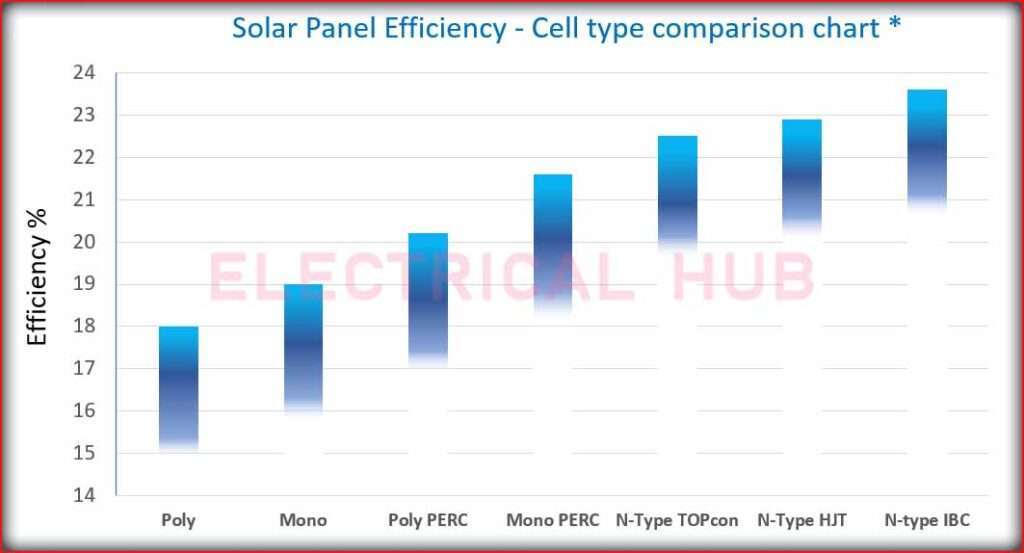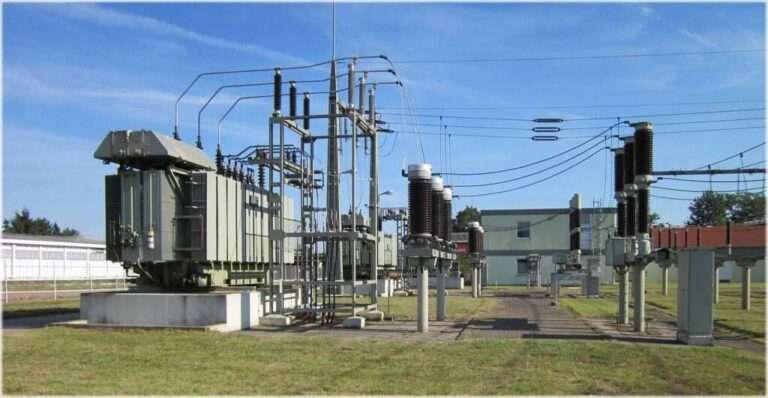Performance Ratio Of Solar Power Plant (PR): Important Overview
The Performance Ratio of solar power plant in short form “PR” in solar energy is a parameter that measures how well solar photovoltaic system is performing. It is a number or percentage that tells us how much energy a solar plant is producing. While comparing to what it should actually produce under perfect conditions. The PR in percentage helps us to understand that how effectively a solar system turns sunlight into electricity.

Table of Contents
Performance Ratio Of Solar Power Plant (PR)
Performance Ratio of Solar Power Plant testing is incredibly important for solar plants. It helps us check how efficiently they work, how reliable they are, and whether they make economic sense. By doing PR tests, we can understand how well the solar installation performs in real life.
Reliability Check: PR testing helps us find and fix any problems or parts that aren’t working well in the solar plant. By comparing actual energy output with what we expect, we can find issues like broken equipment, shading, or panels getting old.
Helping Investments: Investors use Performance Ratio data to decide if they should invest in solar projects. A high PR means the solar plant works well and gives good returns. But a low PR might mean it needs fixing or upgrades to work better.
Making Systems Better: Regular solar Performance Ratio tests let us keep improving solar plants. By looking at data over time, we can make changes and upgrades to get more energy, make the system more reliable, and make it last longer.
Setting Standards: PR helps us compare how different solar plants or parts of a single installation perform. Having a standard way to evaluate them helps set rules and best practices, which pushes solar technology forward and makes it work better.
The solar performance ratio measures how good a PV plant is. No matter where it is located. That is why it is often called a quality factor. It is shown as a percentage and tells us how much energy the PV plant actually makes. Which is done by comparing to what it should make.
Performance Ratio of Solar Power Plant Formula
The Performance Ratio (PR) is calculated like this:-
PR = (Energy generated in kWh) / (Irradiance in kWh/m² x Active area of PV module in m² x PV module efficiency)
Or you can use this formula:
PR = (Energy generated) / (Installed plant capacity in KW x Solar insolation in KWH/m²/day)
What is Solar Efficiency?
Efficiency ratios elaborate how good solar panels work in converting sunlight into electricity. They tell us how well the panels use solar energy. Two main efficiency ratios are:
Conversion Efficiency: This parameter tells us about conversion rate of sunlight which reflects on solar panels. It is basically a percentage which compares the amount of sunlight which is incident on solar panel and the energy which it produces in return. A higher number or percentage tells us that panels are more efficient which means they utilize more sunlight in efficient way and hence make more power.
Efficiency of solar panels also vary according to the technology like mono, poly, poly perc etc. efficiency according to the cell types has been described in below picture.

Operational Efficiency: This looks at how well panels work in different conditions like hot or shady weather. It doesn’t just focus on making electricity but also on how well the panel works in the real world.
Why Efficiency Matters in Solar:
Solar Efficiency is an important aspect because it decides how successful and sustainable or reliable solar projects are. Below are some reasons:
More Electricity:- High efficiency panels make more electricity. Which is from the same amount of sunlight. This is great for places like homes, businesses, and industries. Where space and resources are limited.
Solar panels efficiency drops with the passing years. This is called degradation. With every passing year solar panels tend to drop power by specific constant factor which is normally mentioned on each panel specification sheet or nameplate. Below is general description of efficiency percentage over the years.

Cost Savings:– Efficient panels give a better return on investment over time. Which makes solar power cheaper and more competitive. As we compare against traditional energy sources.
Saving the Planet:- Efficient solar panels mean we use less non renewable energy. Which reduces our carbon footprint and fights climate change. In short, efficient solar power is essential for a greener and hence more sustainable future.
What is a good performance ratio of Solar Power Plant?
A good performance ratio of solar power plant typically in between 75% to 85%. However, the exact value can vary depending on different factors. Which may include the location of the solar plant, the quality of the components used, and the specific environmental conditions.
Generally if performance ratio is higher, it indicates that the solar plant is operating efficiently and effectively. While a lower solar Performance ratio tells that there are issues which need to be addressed. These may include shading, soiling or dust, equipment malfunctions, or in some cases suboptimal system design.
To obtain a higher PR, we need to fix above issues to get higher efficiency. Highlighting the areas where shading affects and calculating the generation loss may help in re-calculating the performance ratio and assess the plant again. Soiling or dust factors can be minimized by maintaining regular PV modules washing cycles.
Equipment malfunctioning can be reduced by rectifying faults in time or replacing faulty parts in a stipulated time. This practice may then help in maximizing the plant uptime which in return increases the photovoltaic performance. Use our solar system design calculator here.
What is performance ratio of solar power plant (PR)?
The Performance Ratio in short form “PR” in solar energy is a parameter that measures how well solar photovoltaic system is performing.
How is the performance ratio of solar power plant calculated?
The Performance Ratio (PR) is calculated like this:-
PR = (Energy generated in kWh) / (Irradiance in kWh/m² x Active area of PV module in m² x PV module efficiency)
Or you can use this formula:
PR = (Energy generated) / (Installed plant capacity in KW x Solar insolation in KWH/m²/day)
What factors can affect the performance ratio of a solar PV system?
Several factors can influence the performance ratio of a solar PV system, including shading, soiling (dirt or dust on panels), temperature, system aging, inverter efficiency, and electrical losses.
What is a good performance ratio for a solar PV system?
A good performance ratio typically falls in the range of 75% to 85%, but this can vary depending on factors such as location, system design, and environmental conditions.
How can performance ratio be improved?
PR can be improved by ensuring proper system design, regular maintenance, cleaning of panels to reduce soiling, minimizing shading, optimizing tilt and orientation of panels, and using high-quality components.
Is performance ratio the same as efficiency?
No, PR and efficiency are different metrics. Efficiency usually refers to the conversion efficiency of individual components, such as solar panels or inverters, while performance ratio considers the overall performance of the entire system, including external factors.
Can performance ratio be used to compare different solar PV systems?
Yes, PR can be a useful metric for comparing the performance of different solar PV systems, as it provides a standardized measure of how effectively each system is converting sunlight into electricity.
How often should performance ratio be calculated?
PR can be calculated on a monthly, quarterly, or annual basis to track the performance of a solar PV system over time and identify any potential issues or areas for improvement.
Are there any software tools available for calculating performance ratio?
Yes, there are several software tools and platforms available that can automate the calculation of PR using data collected from solar PV systems, such as PV monitoring systems or data loggers.
Worth Read Posts
Follow us on LinkedIn”Electrical Insights” to get the latest updates in Electrical Engineering. You can also Follow us on LinkedIn and Facebook to see our latest posts on Electrical Engineering Topics.




